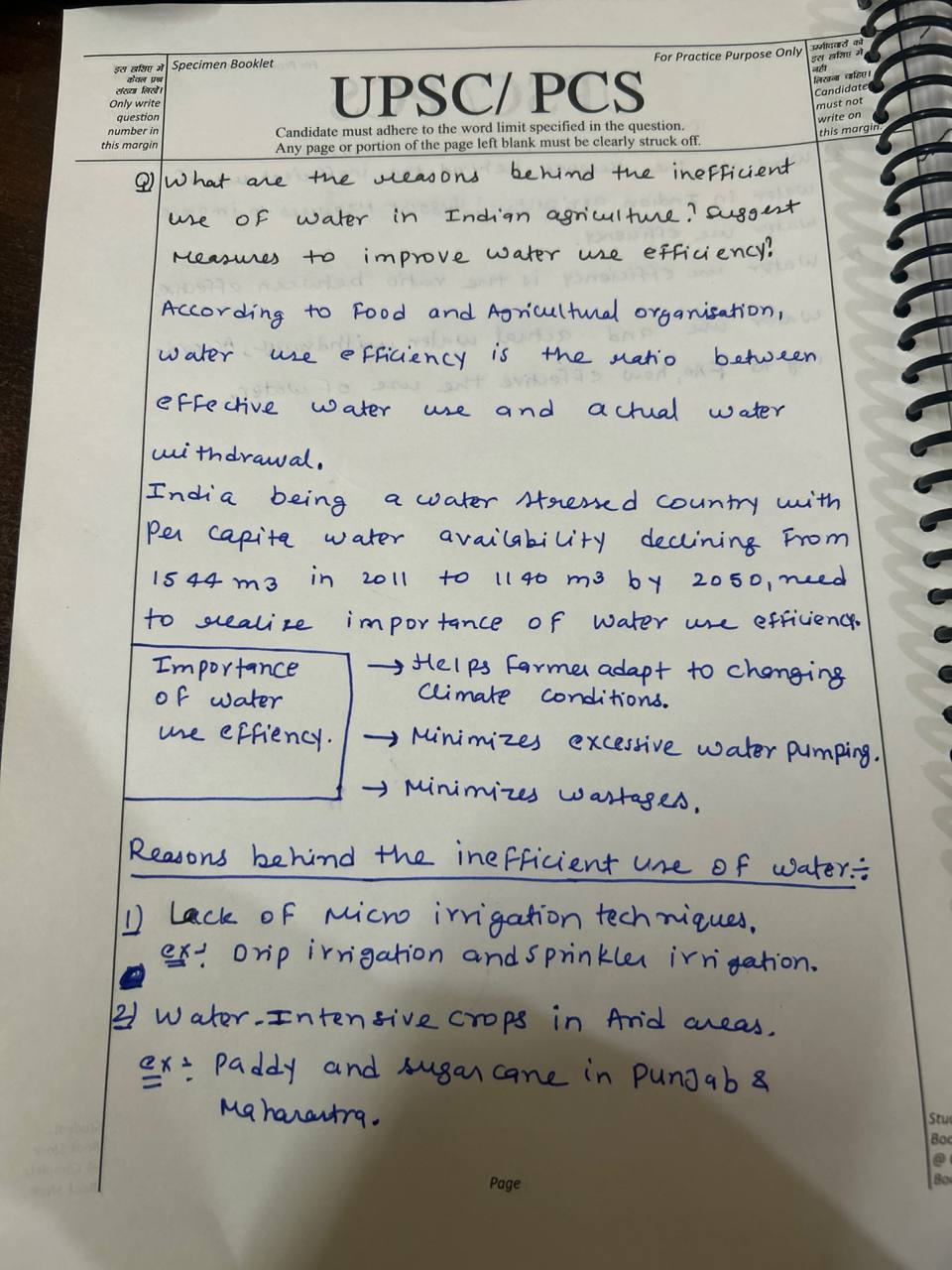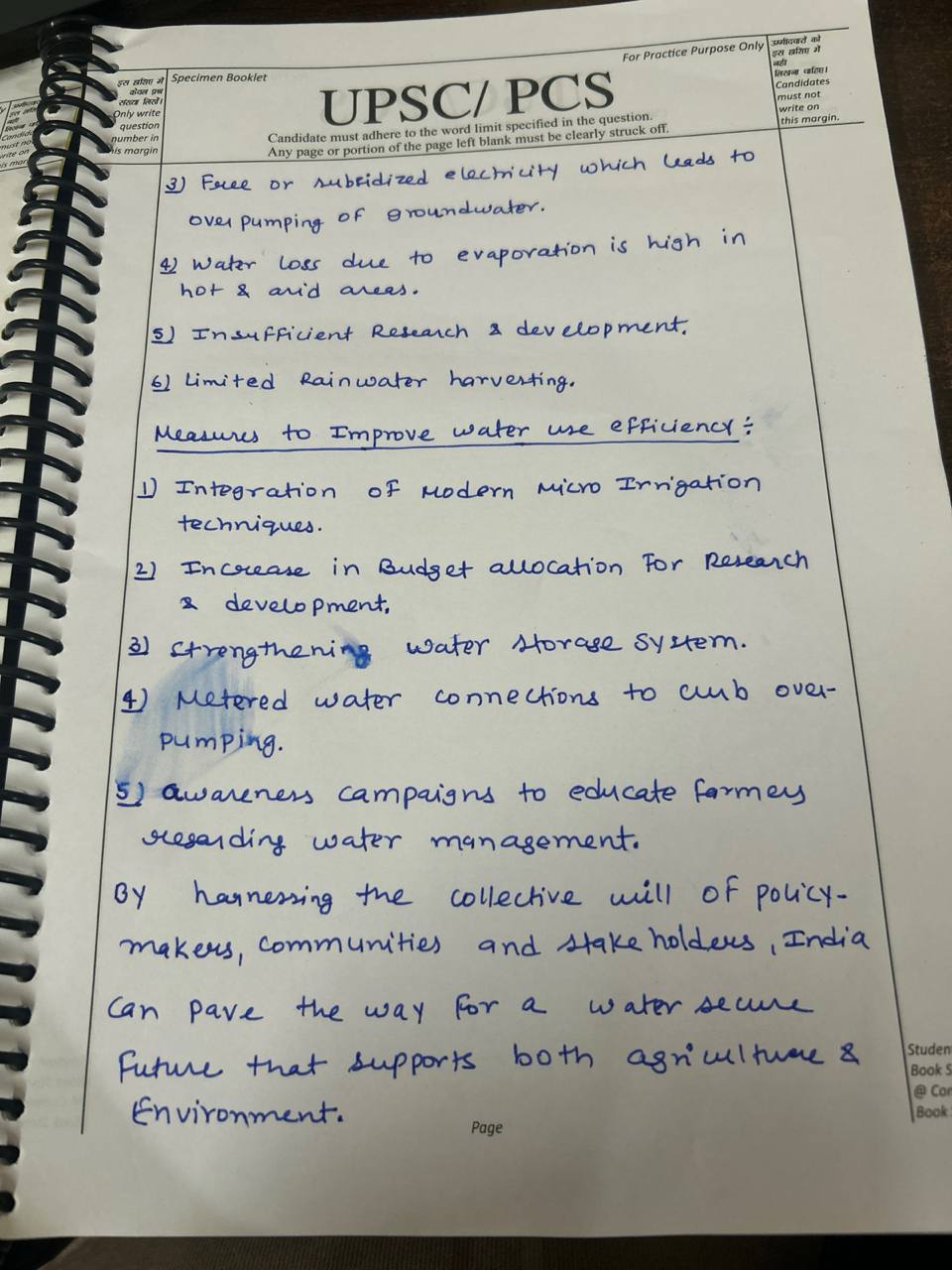Examine the institutional and policy frameworks needed to support community-based water management, and talk about how participatory irrigation management (PIM) and water user associations may improve irrigation system governance and sustainability.
Model Answer Introduction Water scarcity is a pressing issue in India, where the country has 18% of the world's population but only 4% of its freshwater resources. Agriculture is the largest consumer of this limited water supply, emphasizing the need for efficient irrigation methods. Micro-irrigatioRead more
Model Answer
Introduction
Water scarcity is a pressing issue in India, where the country has 18% of the world’s population but only 4% of its freshwater resources. Agriculture is the largest consumer of this limited water supply, emphasizing the need for efficient irrigation methods. Micro-irrigation, which includes techniques like drip and sprinkler irrigation, offers a promising solution to this challenge.
Body
Benefits of Micro-Irrigation
- Reduction in Water Consumption
- Fact: Micro-irrigation can reduce agricultural water demand by 30-50% by delivering water directly to the root zone, minimizing losses through conveyance, runoff, and evaporation.
- Source: National Mission for Sustainable Agriculture.
- Decreased Dependence on Groundwater
- Fact: This method is particularly effective in dryland farming areas where groundwater aquifers are depleting. It significantly lowers electricity consumption, as less water needs to be pumped.
- Source: Ministry of Agriculture and Farmers’ Welfare.
- Sustainability
- Fact: Micro-irrigation can replace flood irrigation, which causes ecological issues like groundwater pollution and salinity. Localized application helps prevent nutrient leaching, preserving soil health.
- Source: Indian Council of Agricultural Research (ICAR).
- Scalability
- Fact: Currently, less than 50% of agricultural land is irrigated, with over 80% of farmers being smallholders. Micro-irrigation can reduce dependency on monsoons and enhance resilience against drought.
- Source: NABARD (National Bank for Agriculture and Rural Development).
Limitations of Micro-Irrigation
- Affordability Challenges
- The initial investment for micro-irrigation systems can be prohibitive for small and marginal farmers, limiting widespread adoption.
- Maintenance Costs
- Regular maintenance of tubes and sprinklers can be burdensome for small farmers, given the small size of their landholdings.
- Crop Choices
- Micro-irrigation may not alleviate water stress caused by poor agro-climatic choices, such as the cultivation of water-intensive crops like sugarcane and paddy in regions where water is already scarce.
Conclusion
Micro-irrigation has significant potential to alleviate India’s water crisis, especially in water-scarce regions. However, it should be part of a broader strategy that includes water conservation, improved water storage, and a shift in cropping patterns to maximize its effectiveness.
See less


Role of Participatory Irrigation Management (PIM) and Water User Associations in Irrigation Systems Participatory Irrigation Management (PIM) and Water User Associations (WUAs) play crucial roles in enhancing the governance and sustainability of irrigation systems. These community-based approaches iRead more
Role of Participatory Irrigation Management (PIM) and Water User Associations in Irrigation Systems
Participatory Irrigation Management (PIM) and Water User Associations (WUAs) play crucial roles in enhancing the governance and sustainability of irrigation systems. These community-based approaches improve the efficiency and effectiveness of irrigation management, leading to better agricultural outcomes and resource conservation. However, strengthening these systems requires effective institutional and policy frameworks.
Role of Participatory Irrigation Management (PIM)
1. Enhancing Governance
2. Improving Sustainability
Role of Water User Associations (WUAs)
1. Operational Efficiency
2. Empowering Farmers
Institutional and Policy Frameworks Required
1. Strengthening Institutional Structures
2. Policy Support and Reforms
3. Enhancing Community Engagement
4. Monitoring and Evaluation
Conclusion
Participatory Irrigation Management (PIM) and Water User Associations (WUAs) are vital for improving the governance and sustainability of irrigation systems. They enhance local management, increase operational efficiency, and empower farmers, leading to better water use and agricultural outcomes. To strengthen these community-based approaches, robust institutional and policy frameworks are required, including legal support, capacity building, policy integration, and enhanced community engagement. These measures will ensure that PIM and WUAs effectively contribute to sustainable water management and agricultural productivity.
See less